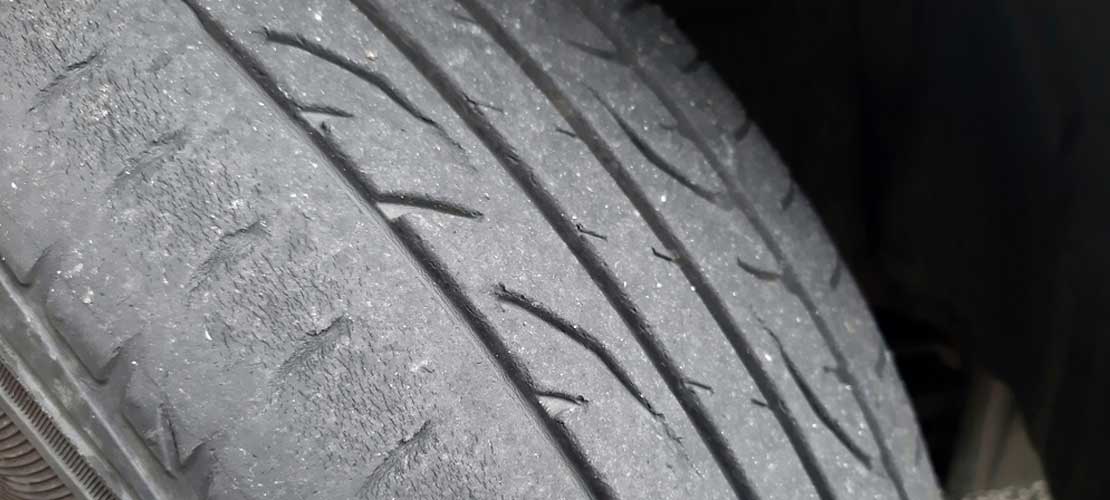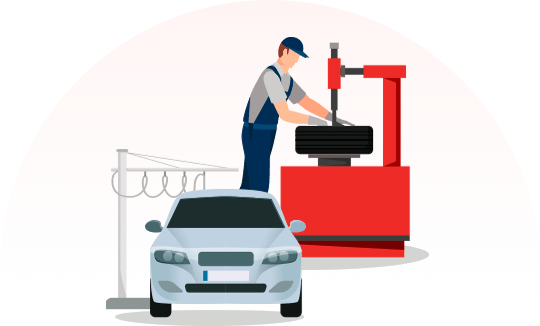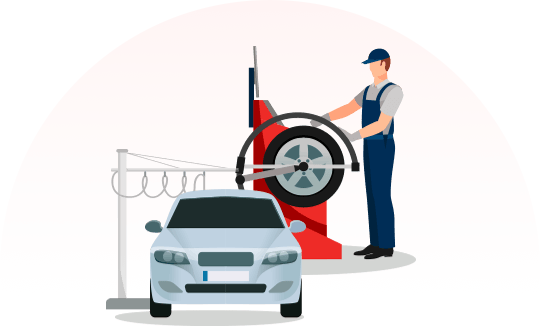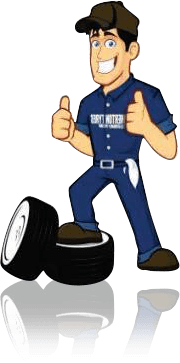- 25 Aug 2024
10 Simple Car Tyre Maintenance Tips for Longer Life

1. Maintain Proper Tyre Pressure
-
Understanding recommended pressure levels
Hey there, fellow drivers! Let’s talk about something super important – your car’s tire pressure. You know that little sticker on your door jamb or in your owner’s manual? It’s not just there for show! It tells you exactly how much air your tires need. Getting this right is crucial for your safety and your wallet.
-
Regular pressure checks and adjustments
Make checking your tire pressure a habit, like brushing your teeth. Once a month is a good rule of thumb, but also do it before long trips. I always check mine on the first Sunday of each month – it’s become a bit of a ritual now!
-
Impact of under-inflation and over-inflation
Think of your tires like your shoes. Too loose, and you’ll wobble around uncomfortably. Too tight, and you’ll get blisters. Under-inflated tires wear out faster and guzzle more fuel. Over-inflated ones give you a bumpy ride and wear out in the middle. Neither is good for your car or your comfort.
2. Rotate Tyres Regularly
-
Importance of tyre rotation
Rotating your tires is like sharing the workload. It helps them wear evenly, which means they’ll last longer and perform better. Trust me, your wallet will thank you!
-
Recommended rotation patterns
There are a few ways to rotate your tires, depending on whether your car is front-wheel, rear-wheel, or all-wheel drive. The most common pattern is moving the front tires to the rear and the rear tires to the front, crossing them as they go. But always check your car’s manual – it knows best!
-
Frequency of rotation
Aim to rotate your tires every 5,000 to 8,000 miles. I usually do mine when I get my oil changed – it’s an easy way to remember.
3. Align and Balance Wheels
-
Signs of misalignment and imbalance
If your car is pulling to one side or your steering wheel is vibrating, your wheels might be out of alignment or balance. It’s like when you’re carrying heavy shopping bags – if they’re not balanced, you’ll start leaning to one side!
-
Benefits of proper alignment and balancing
When your wheels are properly aligned and balanced, your car drives smoother, your tires last longer, and you even save on fuel. It’s a win-win-win situation!
-
How often to align and balance
Generally, get your wheels aligned every 2-3 years or when you notice any signs of misalignment. For balancing, every 5,000-6,000 miles is a good rule of thumb. I always get mine checked when I buy new tires.
4. Avoid Aggressive Driving
-
Effects of sudden acceleration and braking
Screeching off from traffic lights or slamming on the brakes might make you feel like a race car driver, but your tires don’t appreciate it. It’s like running in dress shoes – you’ll wear them out much faster!
-
Cornering and its impact on tyre wear
Taking corners like you’re on a race track is fun, but it’s tough on your tires. They wear out faster on the edges. I learned this the hard way after a particularly enthusiastic mountain drive!
-
Maintaining a steady speed
Cruise control isn’t just for long highway drives. Using it around town can help you maintain a steady speed, which is easier on your tires (and your fuel consumption).
5. Load Your Vehicle Properly
-
Understanding load capacity
Every vehicle has a maximum load capacity. It’s like trying to carry too many grocery bags – at some point, something’s going to give way. For your car, that something is often the tires.
-
Distributing weight evenly
When you’re packing for a trip, try to spread the weight around evenly. It’s better for your car’s handling and easier on your tires. I always put the heaviest suitcase in the middle of the trunk.
-
Avoiding overloading
It’s tempting to try and squeeze everything in for that big move or camping trip. But overloading your car puts extra stress on your tires and can be dangerous. If in doubt, make two trips or rent a trailer.
6. Choose the Right Tyres
-
Selecting tyres based on vehicle type
Not all tires are created equal. Your sporty coupe needs different tires than your neighbor’s SUV. It’s like shoes again – you wouldn’t wear flip-flops to go hiking, would you?
-
Considering driving conditions
Think about where and when you drive most. If you live somewhere with harsh winters, you might need separate winter tires. I switched to all-season tires a few years ago and it’s made a big difference in our rainy climate.
-
Reading tyre specifications
Those numbers and letters on the side of your tire aren’t just for show. They tell you important information like the tire’s size, load capacity, and speed rating. Learning to read these can help you make better tire choices.
7. Keep Tyres Clean
-
Removing debris and foreign objects
Regularly check your tires for stuck stones, nails, or other objects. These can work their way deeper into the tire over time. I once found a small screw in my tire during a routine check – catching it early saved me from a potential flat!
-
Cleaning products safe for tyres
When cleaning your tires, use products specifically designed for them. Harsh household cleaners can damage the rubber. I use a mild soap and water solution most of the time, and a dedicated tire cleaner for deeper cleans.
-
Frequency of cleaning
Try to clean your tires every time you wash your car. At the very least, give them a good scrub once a month. It’s a great opportunity to inspect them closely too.
8. Store Tyres Correctly
-
Proper storage conditions
If you’re storing seasonal tires, keep them in a cool, dry place. My garage was too damp, so I now keep mine in the basement.
-
Protecting tyres from sunlight and elements
UV rays and extreme temperatures can damage tires. If you have to store them outside, use tire covers. I learned this lesson after leaving my winter tires on the patio one summer – they aged much faster than they should have.
-
Storing seasonal tyres
Store your tires vertically if possible, and consider using tire bags to protect them from dust and dirt. I stack mine with cardboard between each tire to prevent them from sticking together.
9. Inspect Tyres Regularly
-
Checking for visible damage
Get in the habit of looking at your tires regularly. Check for cuts, bulges, or objects stuck in the tread. I do a quick walk-around every time I fuel up.
-
Monitoring tread depth
The penny test is an easy way to check your tread depth. If you can see the top of Lincoln’s head when you insert a penny into the tread, it’s time for new tires. I keep a penny in my glove box just for this purpose.
-
Identifying uneven wear patterns
Uneven wear can indicate alignment or inflation issues. If you notice your tires wearing more on one side than the other, it’s time for a check-up.
10. Address Issues Promptly
-
Responding to unusual noises or vibrations
If you hear a strange noise or feel a vibration while driving, don’t ignore it. It could be a tire issue. I once heard a thumping noise that turned out to be a slowly deflating tire – catching it early saved me from being stranded.
-
Fixing slow leaks immediately
A tire that keeps losing air has a problem that needs addressing. Even slow leaks can lead to flats or blowouts if ignored. I keep a tire repair kit in my car for minor punctures, but anything bigger goes straight to the pros.
-
When to seek professional help
While there’s a lot you can do yourself, sometimes you need an expert. If you’re unsure about anything, or if you notice severe or unusual wear, it’s best to consult a professional. Your safety is worth more than the cost of a mechanic’s opinion.

 Google Review
Google Review 




 Google Review
Google Review
 Digitally enhanced by
Digitally enhanced by